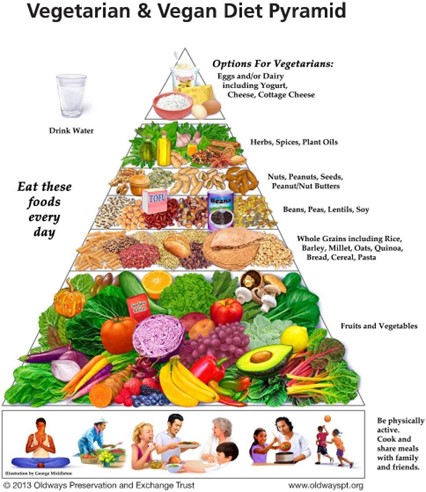The healthcare provider gives a pregnant woman a prescription for one prenatal vitamin with iron daily and tells her to increase iron-rich foods in her diet because her hemoglobin is 8.2 g/dL or (5.09 mmol/L).
When a list of iron-rich foods is given to the client, she tells the practical nurse (PN) that she is vegetarian and does not eat anything that "bleeds." Which instruction should the PN provide? (Select all that apply.)
Add lentils and black beans to soups
Eat red meat just until the anemia is resolved
Take two prenatal vitamins with iron daily
Oatmeal is a good choice for breakfast
Increase green leafy vegetables in the diet
Correct Answer : A,D,E
Since the pregnant woman is vegetarian and does not eat meat, the practical nurse (PN) should provide alternative sources of iron-rich foods. Lentils and black beans are excellent vegetarian sources of iron and can be added to soups to increase iron intake (option a).
Oatmeal is a good choice for breakfast as it is often fortified with iron (option d). This can help supplement
iron intake in the diet.
Green leafy vegetables, such as spinach, kale, and broccoli, are also rich in iron and should be increased in the client's diet (option e).
Option b, which suggests eating red meat just until the anemia is resolved, is not appropriate for a vegetarian client.
Option c, taking two prenatal vitamins with iron daily, is not necessary unless specifically advised by the healthcare provider. It is important to follow the prescribed dosage of medication and supplements as directed by the healthcare provider.
 |
Nursing Test Bank
Naxlex Comprehensive Predictor Exams
Related Questions
Correct Answer is D
Explanation
Choice A rationale:
Systemic autoimmune vasculopathy is not a typical underlying disease pathology associated with a waddling gait and frequent falls in a 5-year-old child. This choice is not relevant to the symptoms described.
Choice B rationale:
Autonomic neuropathy may manifest with a variety of symptoms, including autonomic dysregulation, but it is not a common underlying pathology leading to a waddling gait and frequent falls in a child. This choice is not relevant to the symptoms described.
Choice C rationale:
Impaired neuron function can result in various neurological symptoms, but it does not specifically explain the waddling gait and frequent falls in a 5-year-old child. This choice is not relevant to the symptoms described.
Choice D rationale:
Correct Answer is D
Explanation
Choice A rationale:
Assigning the newly hired unlicensed assistive personnel (UAP) to clients who require the least complex level of care is not the best approach to ensure adequate care for all clients. It may limit the UAP's opportunities for learning and growth and may not fully utilize their skills.
Choice B rationale:
Asking the most experienced UAP to partner with the newly hired UAP is a reasonable approach, but it may not provide a comprehensive solution. It can be beneficial for mentorship and guidance, but it may not address all the clients' needs efficiently.
Choice C rationale:
Reviewing the UAP's skills checklist and experience with the person who hired the UAP is an important step in assessing competency. However, it alone may not ensure adequate care for all clients. Competency assessment should be ongoing and include direct observation of care delivery.
Whether you are a student looking to ace your exams or a practicing nurse seeking to enhance your expertise , our nursing education contents will empower you with the confidence and competence to make a difference in the lives of patients and become a respected leader in the healthcare field.
Visit Naxlex, invest in your future and unlock endless possibilities with our unparalleled nursing education contents today
Report Wrong Answer on the Current Question
Do you disagree with the answer? If yes, what is your expected answer? Explain.
Kindly be descriptive with the issue you are facing.
